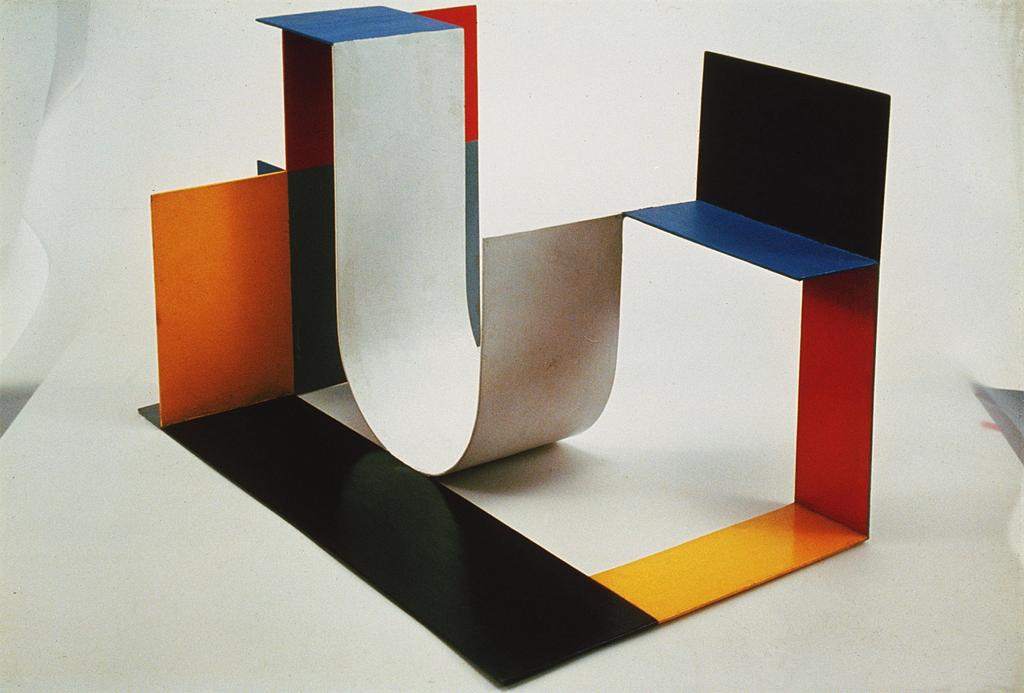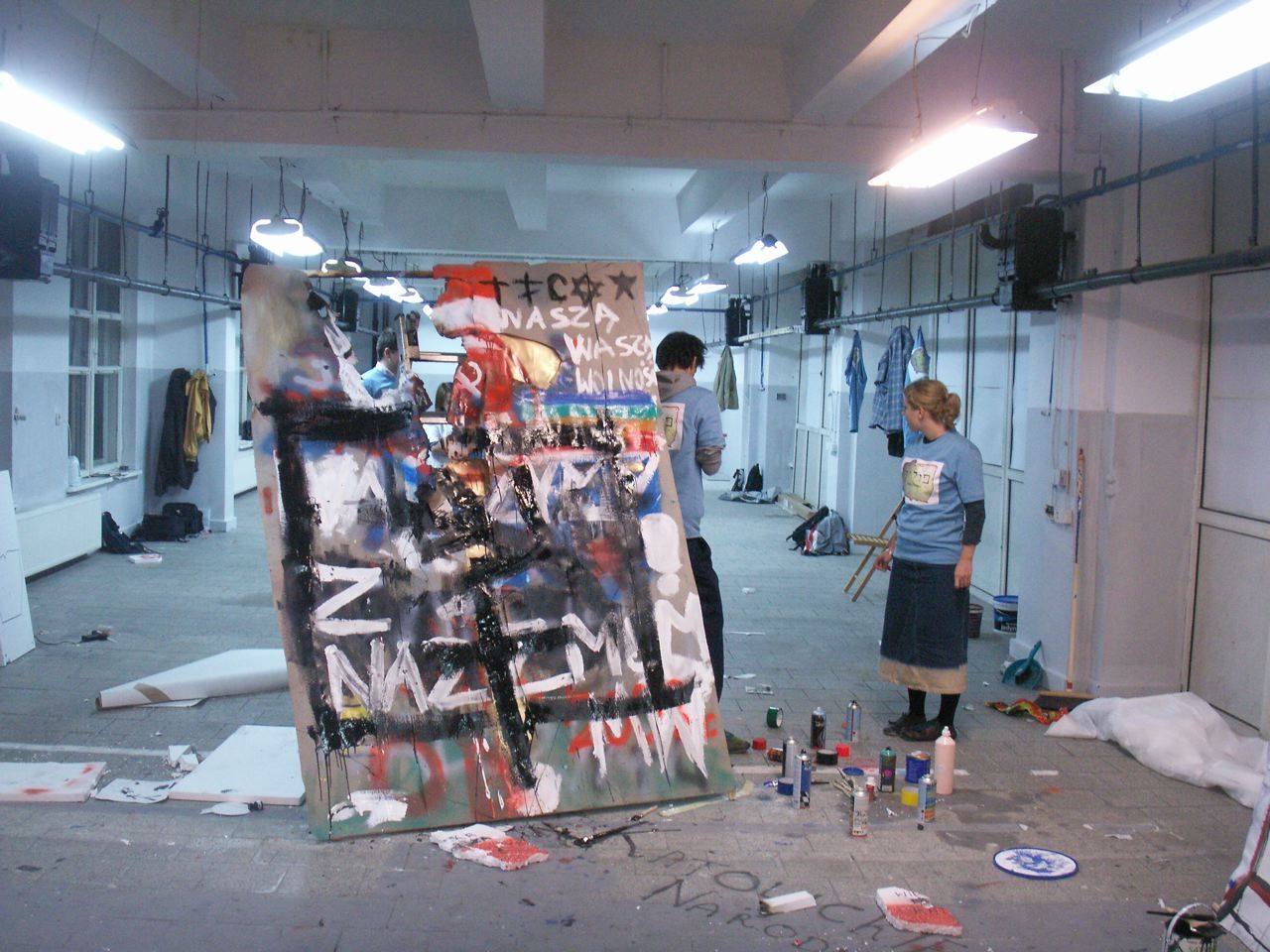Abstraction and Authority: 60 years in a sculpture studio at the Academy of Fine Arts, Warsaw
by Rachel Haidu
This fall, under the aegis of the Skalny Center, I presented a paper entitled “Abstraction and Authority,” which I first presented at a conference on artistic abstraction at the University of Pennsylvania a few years ago. My work on the topic—which essentially covers sixty years of art pedagogy and experimentation at the Warsaw Academy of Fine Arts—began even a few years before that, when I found myself returning again and again to Poland’s capital in order to understand its “art world” better.
When I was first invited to Poland, in 2004, it was to lecture on the well-known artists of Western Europe’s postwar era Gerhard Richter (who actually defected from East Germany in 1961) and Marcel Broodthaers. But as I found myself returning to Warsaw and Krakow, I found myself more and more interested in the major figures of postwar Poland: Edward Krasiński, Włodzimierz Borowski, and most recently, the perplexing and wonderful Andrzej Wróblewski. But as I contemplated each of these remarkable solitary figures in turn, I found myself tugged in two simultaneous and opposite directions: one, toward the phenomenal interwar avant-garde sculptor Katarzyna Kobro (who is also, of course, fascinating also for the particular way that she survived the Second World War and its aftermath); and in the other direction, towards the internationally recognized young contemporary artists, Artur Żmijewski, Paweł Althamer, and Katarzyna Kozyra. The more I learned about these young artists and met them at various talks, dinners, and conferences, the more I became convinced, in the way that only a myopic and naïve tourist-scholar can be, that there was a connection. Between the austere, paradigmatic experiments in color, line, and plane for which Kobro is known, and videos such as that in which Żmijewski films Althamer wandering through forests and cities after having taken various hallucinogens? Indeed.

Katarzyna Kobro, Spatial Composition, 1929, Courtesy of the Estate of Katarzyna Kobro
Bit by bit I learned about a lineage that began in a postwar art studio taught by the Finnish-born architect Oskar Hansen. Hansen is now undergoing a renaissance; his drawings and models for a utopian urban architecture are being exhibited worldwide alongside documents and relics from his incredible career as a teacher. With his 1952 appointment to the “Solids and Planes Studio” at the Warsaw Academy of Fine Arts, Hansen inherited an archaic framework for teaching art. Academic art studios had always focused on drawing from live models, the processes involved in casting metals or carving stone, and, in the case of architecture, constructing scale models. None of these had much to do with the ways that artists, in the immediate aftermath of the Second World War, were searching to make art. In Poland, the search was on: for art that befit not only the new society that the Polish Socialist State wanted to usher in, but that took note of (if only to depart from) the remarkable experimentation that had begun, indeed, in the workshops and classrooms in Moscow, circa 1918. There, Malevich, Tatlin, and others reinvented not only how painting and sculpture could look. Instead of compositions, monochromatic planes could float in a painted field that might even be the same color (Malevich’s White Square, 1918); instead of making painting for a bourgeois or even aristocratic private home, the objects of the new society would reinvent the very means of making art.
So, Hansen took his students outside: he had them interact in games in which their bodies, their movements, and most of all their inventiveness—rather than their dexterity with a paintbrush or their gift for making likenesses—were at stake. The outcomes of the games were less important than the ways that they learned to analyze their own choices and most of all, the ways that they learned to work together. One of the most important artists to come out of his workshop was in fact two artists: the duo that came to be known as Kwiekulik, for its two principals, Zofia Kulik and Przemysław Kwiek. Married (and eventually divorced), they famously filmed their private life and contested the private/public distinction that sanctioned so much of the Polish State’s censorship as the 60s and then the 70s wore on.
Among Kwiek and Kulik’s peers in Hansen’s studio at the Academy was the young Grzegorz Kowalski, who, in 1981, began also teaching in a sculpture studio at the same Academy. Kowalski’s teaching methods, however, spoke less to the ways that Hansen might have imagined drawing the new social relations enabled by the Socialist state into his classroom (which he often moved outdoors, and even to his remarkable house in Szumin, to which he would often invite his students). 1981, after all, was the year that saw the introduction of martial law in Poland, and so Kowalski reverse-engineered his teacher’s pedagogical methods, using the same game-like lessons to both critique the regime and to create a “common and private” zone for his students. Kowalski converted the central dictate that his teacher, Hansen, had invented—that the classroom was no longer involved in creating scale models and drawings from life, but in transforming the very materials of life––and turned into the centerpiece of his pedagogy, which he called Obszar wspólny i własny. If the regime’s radical suppression of any political opposition was making the exhibition of artistic invention difficult or impossible, then the spaces for art would have to be reinvented.
Which is just what Kowalski did, instituting as a ground rule of his classroom the notion that every exchange that the students had with one another constituted their art. The parameters of the game were exploded, and with it, the possibilities for social engagement (such as Kwiekulik had framed them). The “social” was no longer merely oppositional, it lay in every aspect of one’s self-fashioning or dynamic interchange with others. From this exploded notion of the classroom we understand not only Althamer’s meanderings in the woods (in fact a recreation of a project that his teacher Kowalski undertook in the 1980s), but works such as Żmijewski’s Them (2007), in which four groups of Polish teenagers—one representing worker’s rights, another gay/lesbian/queer/transgender identity, another representing the neo-nationalist Union of Polish Youths, and another representing Jewish identity—battle over how to define Poland pictorially. Armed with paint, brushes, and other old-fashioned artistic implements, each team works so hard to erase the other’s definition of “what Poland is” that the entire project is set aflame and thrown out into the courtyard of a school.

Artur Żmijewski, Them5, 2007, Courtesy of Foksal Gallery Foundation
Them echoes a 1971 film by Kwiekulik, Forma Otwarta—Szkoła. “Szkoła” refers to the short film’s setting, in which a group of students reacting to a camera in their midst erupt into a mini-revolt, setting on fire a piece of paper bearing a teacher’s name. Open Form refers to Hansen’s name for his radical concept for “human scale” architecture. If his architecture paradoxically remained mostly impressive on paper and as scale models (very few of his remarkable plans were actually built), it is his pedagogy that lives on, through in two generations of students, one of which reversed his theory’s relation to society itself. Them, like other experiments by the young contemporary artists trained in Kowalski’s studio, play with the ways that a studio is like and unlike society itself, redefining its parameters (“what is society?”) even as its members engage in a fundamental destruction of the very project itself.
But how does this tie back to the distant historical past, to Kobro, and her training in Moscow in 1918? It happens that Hansen built his concept of Open Form partly as a rejection of constructivist obsessions with models. After all, in the 1918 workshops, Malevich, Tatlin, and their students were more absorbed in figuring out how to make art a part of the new society—by making models for that society—than they were in using their bodies and selves as instruments in the new society. But through Althamer and Koyzra, we see a century-later legacy of the constructivist impulse. Between their videotaped experiments and Kobro’s delicate, primary-color-painted tabletop sculptures, I believe, lies a fascinating story. From the moment that revolutionary Socialists imagined a role for art, they imagined a role for the classroom. Since then, the boundary between art and teaching, present and future, and Poland’s public space and her art studios have become truly permeable, in the most exciting ways imaginable.
For this coming academic year I have been granted a year-long leave with support from the American Council of Learned Societies. Part of my time will be spent in Poland, continuing interviews with Kowalski, Żmijewski, Althamer, and others; and part in Łódź, where Kobro’s archives are entrusted to the museum for avant-garde artists that she helped to found with her then-husband, Władysław Strzemiński. I wish I had the time to do their story justice as well... but that’s for another year!
Rachel Haidu is Associate Professor of Art History and Director of the Program in Visual and Cultural Studies, University of Rochester.